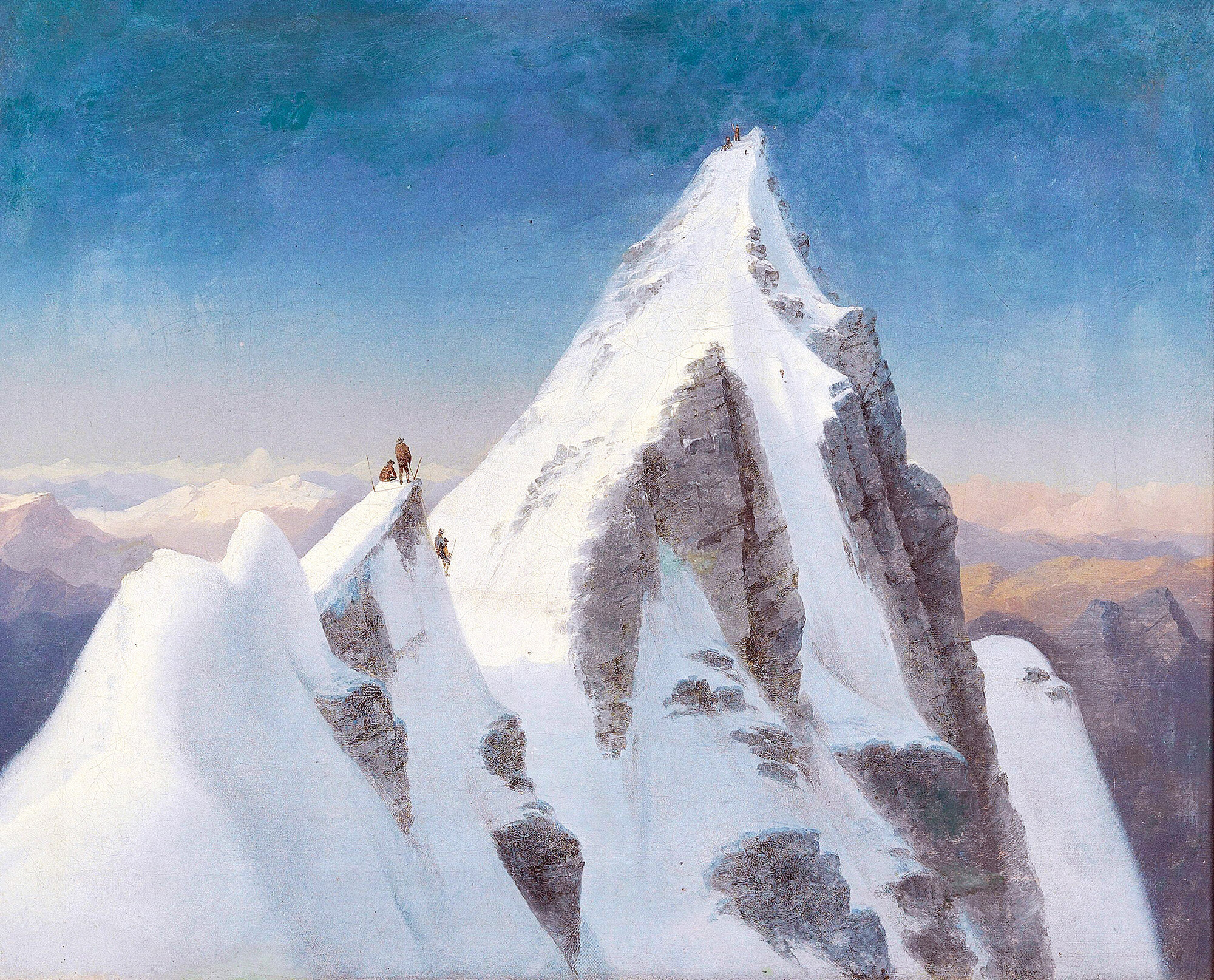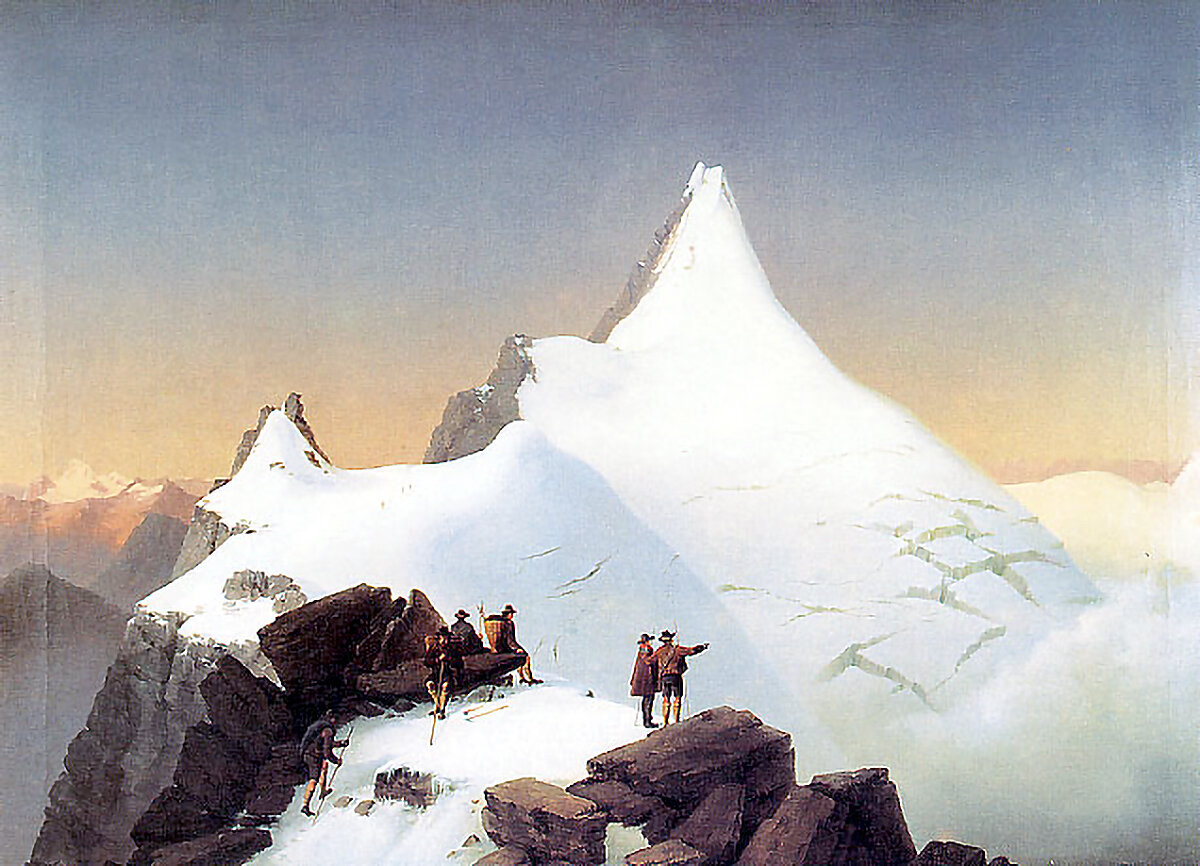Markus Pernhart’s Großglockner Paintings
1871 painting by Markus Pernhart titled Großglockner, which is the highest mountain in Austria.
The above painting was created in 1871 by Austrian artist Markus Pernhart. It shows the peak of the Großglockner, or Grossglockner, which is the tallest mountain in Austria. It does a great job capturing the contrasting scales of human and mountain. If you look closely, there are two groups of mountaineers pictured atop each peak, dwarfed by the jagged forms of snow and rock. This puts the focus of the painting on the majestic beauty of the mountaintop, rather than the effort it took the mountaineers to reach it. In many ways, these mountaineers are meaningless when compared to the mountain itself. The Großglockner has been around for millennia, and will still be around long after this expedition is finished.
Pictured here are two details of the mountaineers. Each group faces the other, and it appears the expedition has reached it’s goal, with both peaks summited. This moment is an afterthought in the overall work, however, because Pernhart has chosen to focus on the scale of the mountain. In most artwork dealing with mountains and mountaineering, there’s two camps. The first focuses on the landscape itself, showcasing the scale and majesty of the mountains themselves. The second focuses on the human element, and showcases the drama and elation of reaching the summit. This piece seems to do both, which is why it caught my eye.
1850 painting by Markus Pernhart titled Der Großglockner, which is the highest mountain in Austria.
Pictured here is another painting by Pernhart, also of the Großglockner. It’s an earlier work, from 1850, and it focuses a bit more on the human element. We can see a single mountaineer, facing away from us and looking up to three other mountaineers on the summit. Here, the mountaineers aren’t dwarfed by the mountain as they are above. It’s an interesting shift in the focus of the work, and it illustrates the choice of the artist on which subject the painting will be about.
1857 painting by Markus Pernhart titled Großglockner von Hohenwartscharte, or Großglockner as seen from the Hohenwartscharte, which is the highest mountain in Austria.
Lastly, here’s one more painting, from 1857, same artist and same subject. Here, we’re positioned much closer to a group of mountaineers, who face away from us and look up to the summit, as if they’re plotting out their course to the top. Here, we get a good balance between the human and the mountain. The individuals in the foreground are close enough that we can understand their point of view, but they’re still small figures, insignificant in scale next to the massive mountain.
These three works make an amazing trio, because they allow us to explore the relationship between human and mountain. This seems to be what Pernhart was wrestling with, because he changes the focus in each work. As a group, these painting allow us to ponder the nature of mountaineering, and bring to light just how insignificant we are next to these giants of nature.
Check out other posts about mountaineering here.




